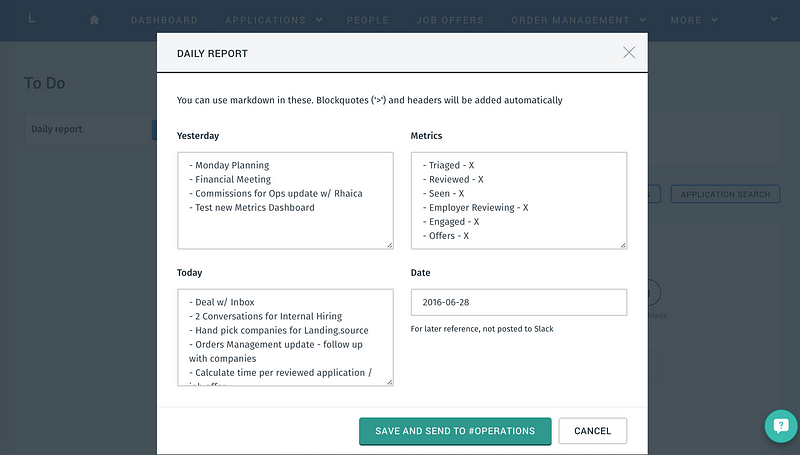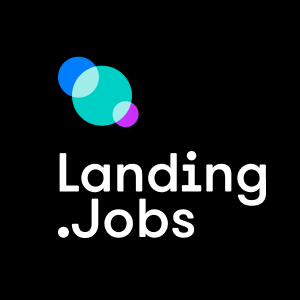One of the best things about working in the tech industry is to be able to always be on top of the latest trends regarding new frameworks, methodologies or programming languages. We’ve been working hard to have the opportunity to help companies like Sky, Booking.com, Spotify, Skyscanner, and Zalando hire great tech candidates, and learning about their product and engineering teams’ dynamics and organisation.
Being an engineer myself, I’ve always been curious about how things work and why things are. However, after building a portable ECG from scratch at Exatronic, helping to build cold chain temperature sensors at Qold, or migrating a couple of hundred thousand TV services at Vodafone, I realised I’m way happier making the bridge between the technical and business areas than actually mastering code on my IDE.
In this past year, I was given the chance to create and help grow an incredible Operations team from scratch. The culture and team dynamics we live in on a daily basis is one of the greatest outputs I’ve had in my professional life so far. One of the things that helped more than anything was the ability to apply some Agile Methodologies in the core of our Operations team.
We know the Agile Manifesto is “undercovering better ways of developing software”, but who said this could only be applied to software development?
We’re obviously talking about completely different things here, but the point is to apply some agile practices into our Operations team in order to make us more productive, flexible, and collaborative. Just to touch base here, when talking about Operations I’m referring to stuff like Account Management, Talent Advocacy, Data Analysis, and some other human tasks.
Even knowing we’re not developing software, we started looking at some of the best practices our Product team was already using and we adapted some for ourselves:
1. Monday Plannings
(or as we like to call it: Ops Hands on Deck)
Every Monday we have a half hour meeting where we share the good, the bad, and the next steps for improvement. We currently have 3 teams inside our Operations team, divided by geography:
- Portugal
- United Kingdom
- Germany + Spain
We ask every Team Lead to present to the entire Ops team and others how we performed the preceding week, always beginning with some unexpected GIFs and followed by metrics, KPIs and revenue indices.

Apart from sharing what every team is doing every week, some best practices and results from new stuff we tested, it’s mandatory to always state:
- 3 Major Winnings
- 3 Things to Improve
- 3 Action Items for the Week
- Achievement status of the 3 Action Items proposed in the Last Week
And going into some of our motivations, this is what happens to the Head of Ops in case the Monthly Goals are achieved (this is not me, for the record; the real one is way worse…):
2. Trello
We believe in productivity and having people happy and engaged in the workplace. Because of that, and especially for Operations positions which require performing repetitive tasks every single day, we’re pushing people to own some side projects. The interesting way is how we’re managing them now:

That’s right, we have an Operations team who really knows how to use Trello like a second language and we have boards for everything (sometimes way too many).
Apart from labelling and having a healthy funnel filled with ideas, we’re using this Scrum for Ops extension to help us estimate properly the amount of time each card will take to be executed.
We’re using a Kanban approach for managing these side projects, moving our cards across the board into different lists, from left to right. Every list has a different goal and the card is moved when that list’s goal is accomplished. In our case, we’re working with the following lists:
1. Backlog: where new cards are created and explained;
2. Needs Info: for cards not clear enough in need to be reviewed to clarify what we’re trying to achieve;
3. Next Up Tasks: Cards ready to start being developed. Before reaching this point, it’s extremely important that goals are clear so we’re easily able to identify when the card will be completed;
4. This Sprint: Cards under development during the current sprint;
5. Acceptance: Before going live (aka being approved) the cards get reviewed by the Head of Operations to be tested/get feedback before being considered completed;
6. Done Current Sprint: Cards successfully completed during the current sprint;
7. Done: All the cards developed and successfully completed so far;
8. Rejected: Cards that, for some specific reason, were turned down. For the sake of transparency, we always explain clearly why we rejected them; some because they’re just not feasible, and others because similar ones are already being developed;
9. Iceboxed: Cards with good and clear ideas but without the best timing. To be picked up in the future.
3. Standup Meetings
We started doing this a long time ago when we were still a small bunch in the Operations team. Back then, we gathered every day at 9.30am and everyone had 3 minutes to explain what they were going to do that day. It was a great team moment and helped us grow as a team. If someone said, “today I’ll be focusing on finding a Ruby on Rails developer for company X”, there was always someone who answered, “I know a guy/girl who might be a great fit”. We changed some lives this way!
However, we started growing and it became really time-consuming to have synchronous dailies when we passed the 10-people mark in the Operations team. We looked for some Slack bots to help us manage. We tested a few, with a template we defined, but a few months ago we developed our own solution (thanks to our Product team). Look at this beauty:

Just press “Save and Send to #operations” and…

We’re also sharing our metrics on a daily basis so we can iterate how healthy our individual applications funnels are.
4. Weekly Focus
Every single member in the Operations team is responsible for managing several employers with a variable number of job offers. We always like to look at ourselves as some mega tireless account managers (and we are!), but we still need to define some weekly focus for the premium job offers we’ll be giving more attention to.
Our main support tool is our own backoffice, tailored to every single one of our needs, begging us to insert our three beloved job offers on a weekly basis so that we can evaluate how we performed.

This really helps us to:
- Prioritise and properly define what will be our focus for the week;
- Commit ourselves and work to achieve great results on those job offers;
- Track and measure how we performed;
- Iterate on a weekly basis and start again.
There are a lot of factors we need to take into consideration when picking those job offers (we’re segmenting them in several ways), and this way we can always learn new ways of approaching and getting the best results according to the segment we’re working on.
During our Friday retrospectives, our 3 Operations teams gather by themselves and internally share how their week went, what were their biggest accomplishments, analyse how they performed on their job offers and understand what’s blocking them to get the best out of their job. All these lessons are shared on the following week’s Monday Planning — but by then, it’s weekend time!
5. Collaboration
This word represents a vital part of our daily workflow. We’re talking with a lot of candidates, some potential ones, employers, and it’s critical for us to make the best out of every contact.
Here you have our most beloved Giovanna saving our Wall of Ops. Here’s where everybody tracks job offers they’re responsible for at the moment, according to Skills, Geography and Seniority. And if you know someone with some proper knowledge on Docker, Kubernetes and Elixir, Giovanna will love to speak to you!

This is critical for collaboration in the Operations team, since we can have a simple and visual overview of all major positions we currently have, allowing us to directly reach the person in charge for each one of them.
Based on the above, we started a new initiative called Pair Sourcing, in which two team members looking for candidates with the same skill set work alongside for a couple of hours, sharing methods, learning more about specific technologies, and successfully finding new candidates for some of their positions.
It’s been interesting to follow the improvements we’ve been able to accomplish as every member of the team gets more and more used to these methods. Apart from our Product and Operations team, we’re also expanding some of these practices to the other two teams we have at Landing.jobs, and it allows everybody not only to get the best out of their work with their teammates, but also at an inter-team level.
It may sound unusual, but it’s more than possible to use agile practices beyond the realm of software development. More than adapting methodologies, it implies a change in the way people think, organise their work and collaborate together.






0 Comments